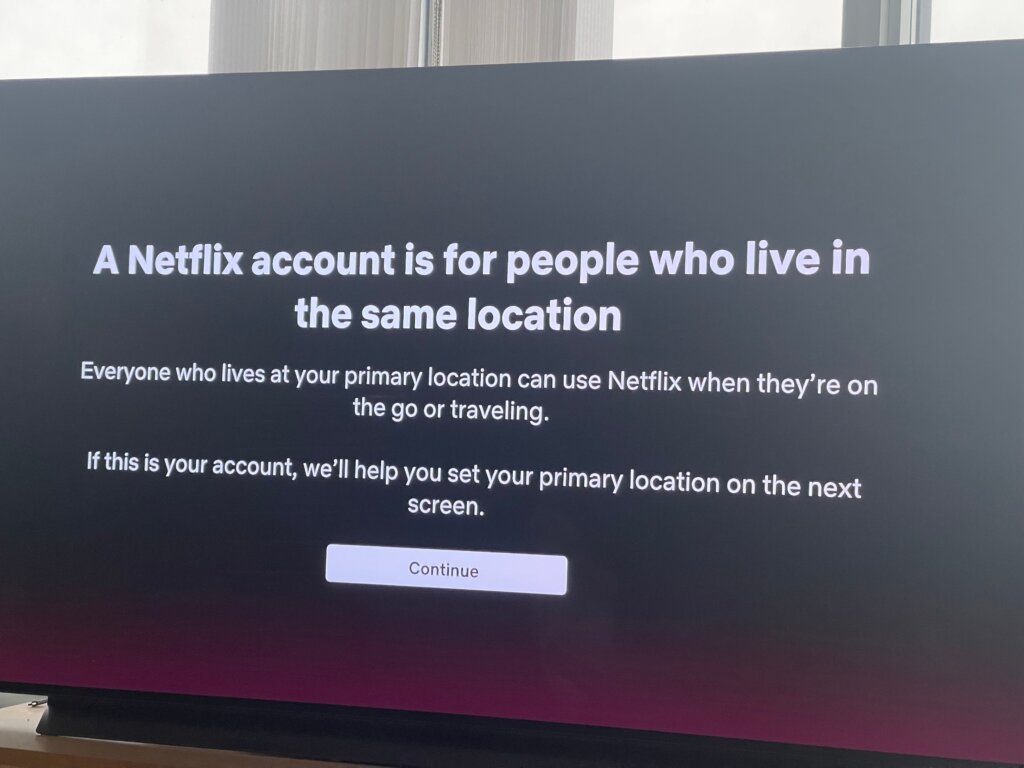
The end of the password-sharing era in Netflix. Here’s what it means for subscribersSource: Netflix
The end of the password-sharing era in Netflix. Here’s what it means for subscribers
- Netflix claims over 100 million households have password-sharing accounts — impacting its ability to invest in “great new TV and films.”
- For every different account not in the same ‘household,’ Netflix will charge £4.99 in the UK, US$7.99 in the US, and RM13 in Malaysia, to name a few.
- Having turned a blind eye to password sharing because it fueled growth, Netflix decided to crack down starting this year because password sharing is impacting its bottom line.
For many years, Netflix has turned a blind eye to password-sharing. In fact, the streaming giant encouraged password sharing in its early days. At that point, getting as many new eyes as possible on Netflix was imperative to establishing itself as a bonafide media entity. Then, in April 2022, Netflix announced its first subscriber loss.
During that March quarter, Netflix lost more than 200,000 subscribers. Almost immediately, its shares began to plummet. Then between April and July of the same year, it lost another million subscribers as more people quit the service. That was when the streaming giant, after enjoying a long reign, realized it was facing a tough fight to keep its crown.
Rivals were challenging its dominance, and price hikes were taking a toll. It was a stark change for Netflix after enjoying years of seemingly unstoppable growth, as it revolutionized how people worldwide consumed entertainment—the same fierce competition from Apple TV, HBO Max, Amazon Prime, and Disney+.
From being the disruptor to making video rental stores like Blockbuster redundant, Netflix was fast becoming disrupted. The return of pre-pandemic habits highlighted Netflix’s struggle to attract new sign-ups – and maintain the loyalty of existing members, mainly due to the rising cost of living that has led to people cutting back.
So much so that by 2022, Netflix decided it was high time to tighten the company’s password-sharing rules. The streaming giant even highlighted how, of 215 million paying accounts, around 100 million share a password with someone outside their household.

(Source – Shutterstock)
How will the new password-sharing crackdown impact a typical Netflix user?
The “broad rollout” of the password-sharing crackdown that began in 2022 has started this week. The company tested the “paid sharing” plan in several countries earlier this year, including Canada, New Zealand, Portugal, and Spain. According to Kantar’s research that surveys household streaming habits, Netflix introduced a €5.99 monthly fee for users in Spain who shared their log-in details with another household; there was a fall in users of more than a million. Out of which, two-thirds were using someone else’s password.
To that, during an earnings call last month, Netflix said that it has seen a “cancel reaction in each market when we announce the news” about the paid sharing option, but then it sees “increased acquisition and revenue.” In Canada, which Netflix believes is a reliable predictor for the US, its paid membership base is more significant than before the launch of paid sharing, the streaming giant said.
“Revenue growth has accelerated and is now growing faster than in the US,” Netflix said in the earnings call. Fast forward to this week, Netflix announced that it would expand its password-sharing crackdown into the United States, United Kingdom, and the rest of the world. “A Netflix account is for use by one household. Everyone living in that household can use Netflix wherever they are – at home, on the go, on holiday – and take advantage of new features like Transfer Profile and Manage Access and Devices,” it said.
What is a Netflix Household?
A Netflix account is meant to be shared by people who live together in one household. People outside your household must sign up for their account to watch Netflix. In short, sharing your Netflix password with someone who doesn’t live with you will cost an extra US$7.99 per month in the US, £4.99 in the UK, and RM13 in Malaysia.
“A Netflix Household is a collection of devices connected to the internet at the main place you watch Netflix. A Netflix Household can be set up using a TV device. All other devices that use your Netflix account on the same internet connection as this TV will automatically be part of your Netflix Household,” the streaming giant said.
Netflix also noted that it detects devices within a Netflix Household using information such as IP addresses, device IDs, and account activity “to determine whether a device signed into your account is part of your Netflix Household. We do not collect GPS data to determine your devices’ precise physical location.”
READ MORE
- 3 Steps to Successfully Automate Copilot for Microsoft 365 Implementation
- Trustworthy AI – the Promise of Enterprise-Friendly Generative Machine Learning with Dell and NVIDIA
- Strategies for Democratizing GenAI
- The criticality of endpoint management in cybersecurity and operations
- Ethical AI: The renewed importance of safeguarding data and customer privacy in Generative AI applications


